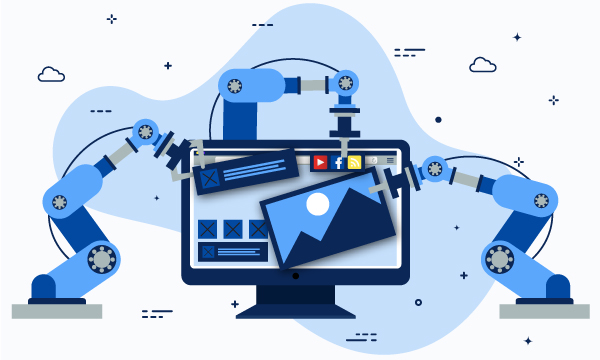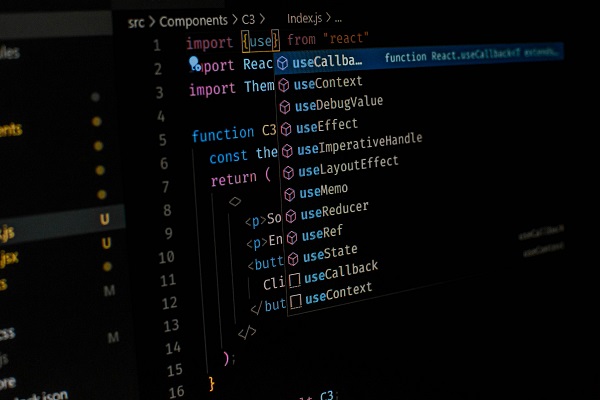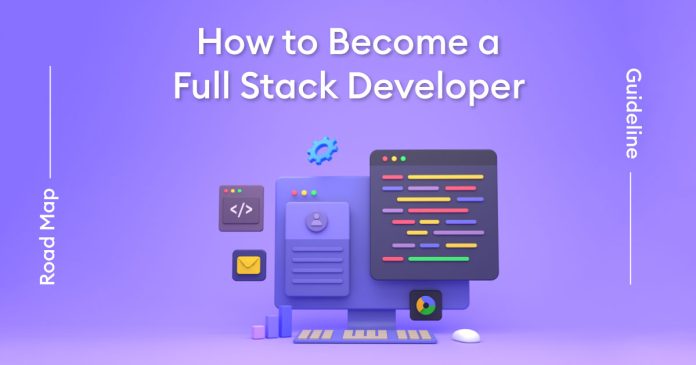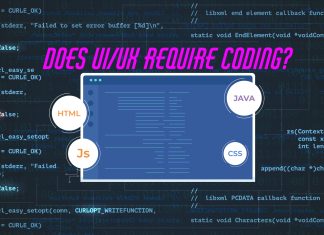A Full Stack Developer is someone who can handle both front-end and back-end tasks simultaneously. While the front-end developer focuses on what you see on the website, the back-end developer works behind the scenes, handling tasks like communication with the front-end and serving requests. In this article, we’ll explore how to become a Full Stack Developer and the skills required for it.
What is Front end development?

Frontend development is about creating the visible parts of a website, like its layout, content, colors, fonts, and animations. It’s what users see and interact with.
There are three main things to learn for frontend development:
- HTML
- CSS
- JavaScript
HTML (Hyper Text Markup Language): If you liken a website to the human body, HTML serves as its skeleton. It provides the basic structure and organization, similar to how bones form the framework of the human body.
CSS (Cascading Style Sheets): While HTML sets up the structure, CSS is responsible for the aesthetics. It adds style and design to the website, controlling aspects like colors, fonts, spacing, and layout. CSS enables developers to customize the appearance of individual elements, making them visually appealing and cohesive. Just as our body features different colors and styles, CSS defines the visual presentation of web elements.
JavaScript: JavaScript brings life to the website by adding interactivity and functionality. It allows for dynamic behavior, enabling elements to respond to user actions and events in real time. JavaScript is akin to the nervous system of a website, facilitating communication between different components and orchestrating interactive experiences. It powers features such as form validation, animations, user input handling, and content updates without page reloads.
How long does it take to become a front-end developer?
Learning HTML and CSS typically takes around a month, at least in my experience. Once you’ve got a handle on CSS, it’s a good idea to dive into CSS frameworks like Tailwind or Bootstrap.
Next, the most important and difficult part is learning the programming language. JavaScript serves as the foundational language for web development. If you’re already familiar with another programming language, picking up JavaScript will be a bit easier. But if you’re starting from scratch or beginning your programming journey with JavaScript, it might be a bit tougher and take some time – around 6 to 8 months to grasp the basics.
To make your learning journey more effective, try to apply what you’ve learned in projects. For instance, start by using HTML to structure a website or project, then add style with CSS. Finally, make it interactive using the latest JavaScript techniques.
By completing 4 to 5 unique projects in this way, you’ll reinforce your learning and make steady progress.
What is Backend end development?

The backend is the part of a website that works behind the scenes, unseen by users. Imagine logging into a website with your username or email and password. How do they verify it and how is this whole process being performed? If your credentials are incorrect, the website tells you so, but if they’re right, you successfully log in. This whole process, hidden from our view, is part of the backend. Many such operations occur without us noticing.
Consider searching for a product on Amazon. When you find it, it’s because the product was already in their website’s database. The system retrieves and displays it for you. All these actions are part of backend or server development.
You need to learn several key technologies for Backend Development
- Server-Side Programming Languages
- Databases
- APIs (Application Programming Interfaces)
- Authentication and Authorization
Server-Side Programming Languages: To learn backend development, you need to pick up a programming language. If you’ve already got a grip on JavaScript for frontend work, then learning Node.js, which uses JavaScript too, could be a smooth transition for you. However, there are other popular languages tailored for backend development such as Python (often paired with frameworks like Django or Flask), Ruby (paired with Ruby on Rails), and Java (often used with Spring or Java EE).
Databases: When you hear “database,” you know it’s where data stores. Databases are a big part of backend work. You’ll want to understand database management systems (DBMS) and how to handle both relational databases like MySQL, PostgreSQL, or SQLite, and NoSQL databases like MongoDB or Firebase.
APIs (Application Programming Interfaces): Understanding APIs is crucial for linking the frontend and backend. Whenever you perform an action or request something on a website’s interface, it’s the API’s job to shuttle that action or request from the frontend to the backend for processing.
Authentication and Authorization: We’ve discussed login and verification earlier, which falls under Authentication and Authorization. To handle this, you’ll need to learn techniques like password hashing, session management, JSON Web Tokens (JWT), OAuth, and OpenID Connect to verify user identity and grant access. Security.
How long does it take to become a Backend Developer?
To become a backend developer, you’ll also need to understand web servers, version control systems, website security, deployment, and DevOps. But these four technologies we mentioned are fundamental and serve as the core concepts for backend development. Starting with them is a great way to build a strong foundation in this field.
It takes an average of 6 months to 1 year to learn these technologies and become a proficient Backend Developer. Becoming a backend developer is a continuous journey. Learning regularly and taking on challenging projects is crucial. Projects help you track your progress, and real learning often happens when you encounter errors and spend time fixing them.
Benefits and Opportunity to Become a Full Stack Developer
Becoming a Full Stack Developer opens up a world of job opportunities. You can apply for front-end roles, back-end roles, or even both at once. Companies are eager to find candidates who can handle multiple tasks simultaneously.
Full Stack Developers excel at problem-solving compared to front-end or back-end specialists. When I was solely a front-end developer, I often struggled when errors occurred, wondering if they originated from the back-end. Since I hadn’t learned back-end development yet. Sometimes, I’d just give up on fixing problems. This made it hard to finish projects, and I started to lose motivation.
Moreover, Full Stack Developers have the potential to be entrepreneurs. Their diverse skill set allows them to create their own products or startups. They can oversee every stage of development, from brainstorming ideas to deploying the final product. This versatility is a huge advantage for entrepreneurs who want to bring their visions to life independently.
Full Stack Developer Resume Tips
If you search for full-stack developer resumes on Google, you’ll find various layouts and styles. However, I’ll share my personal experience and insights on what to include and how to present it effectively.
Create a clean and readable resume by using no more than one or two fonts. Structure your content logically, with recent experiences listed first. Ensure your resume includes sections for contact information, a professional summary, work experience, skills, and optionally, education and certifications.
Remember, HR professionals review many resumes, so make yours stand out by incorporating numbers and metrics to showcase the impact of your work. As a full-stack developer, feature full-stack projects like a Chat Messaging App or project management app. Highlighting unique projects will grab attention.
Full Stack Developer Interview Questions and Tips
Refresh your fundamentals by revisiting key concepts in HTML, CSS, JavaScript, and your chosen back-end languages and frameworks. Practice solving common coding problems on platforms like LeetCode and HackerRank to enhance your skills. Focus on mastering JavaScript, especially challenging topics like Asynchronous or Synchronous behavior, Closures, Callback functions, and hoisting.
Additionally, research the company and role thoroughly to tailor your preparation.
Clear communication is crucial during interviews. Be honest about your knowledge and don’t hesitate to admit if you’re unsure about an answer. Demonstrate your eagerness to learn and grow; interviewers don’t expect you to know everything.
Choosing a Stack for Full Stack Web Development
To become a full stack developer, you need to pick a tech stack and dive in. There are several popular choices like MERN, MEAN, MEVN, PERN, or PEVN stacks. Among these, MERN stack stands out as the most favored option.
What is the MERN Stack?
The MERN stack stands for MongoDB, Express.js, React, and Node.js. This stack is selected for its components: MongoDB for the database, Express.js for the backend framework, React for the frontend library, and Node.js for running server-side JavaScript code.
Several well-known companies have usded the MERN stack for their websites, including Netflix, Facebook, Uber, Walmart, WhatsApp, and many others. This demonstrates the effectiveness and popularity of this stack.
MERN Stack Project Ideas
With the MERN stack, you can tackle a wide range of projects. If you’re just starting out, consider beginning with simpler projects like a Todo List Application, Job Board, Weather App, or Calculator.
As you become more experienced, you can progress to more advanced projects such as a real-time messaging app, video call app, resume maker, stock market tracker, ecommerce platform, or even an Amazon clone. Start small and gradually challenge yourself as you become more comfortable with the stack.
MERN Stack Developer Salary
According to Glassdoor, a MERN Stack Developer in the United States earns an average of $93,938 per year, which represents a mid-level salary. This figure is likely an average across various experience levels, with mid-level developers making up a significant portion of it. However, senior MERN Stack Developers can earn significantly more. Estimates indicate that senior developers in the US can make anywhere from $136,500 to $164,500 annually.
In addition to their salary, MERN stack developers have opportunities to earn extra income through freelancing platforms like Fiverr and Upwork, where they can take on client projects. They can also generate passive income by selling templates or digital products on marketplaces like Themeforest and Creative Market.
Read more: Is web development a good career?



